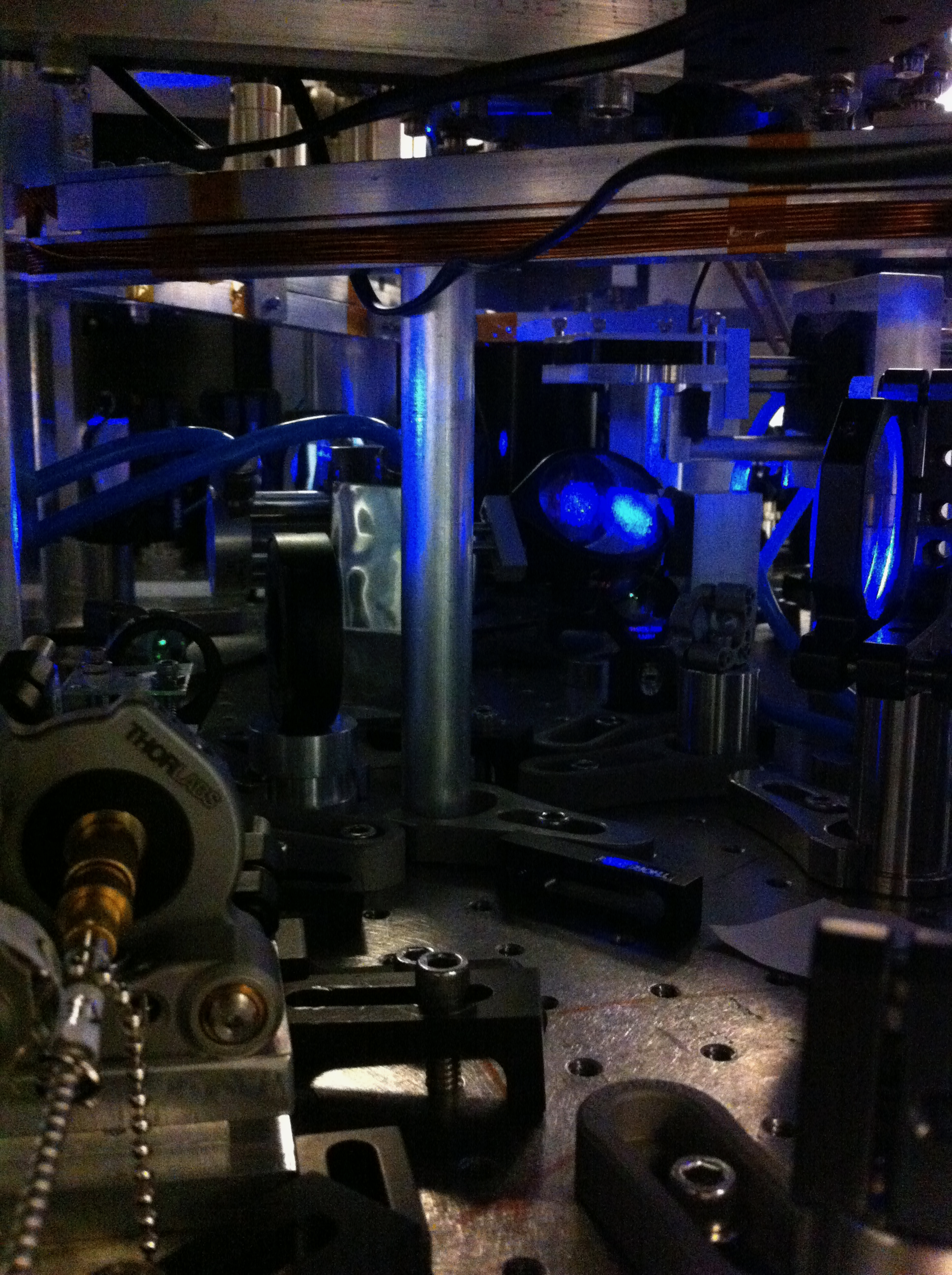
Leveraging Rydberg Atoms and Molecules in Quantum Gases
Coupling quantum degenerate gases of atoms to highly-excited Rydberg states (and their exotic counterpart ultralong-range Rydberg molecules) offers unique capabilites for making, probing, and controlling strongly correlated many-body systems. From tunable long-range interactions to controllable non-local dissipation, we aim to explore the novel ways Rydberg states can help push the boundaries of quantum simulation with ultracold atoms.
Previous Research
Li-Cs: From Few to Many
While 133Cs (a heavy boson) and 6Li (a light fermion) can hardly be less alike, together these atoms make a fantastic pair for experiments. In my time as a postdoc in the Chin Group at the University of Chicago, we utilized interspecies Feshbach resonances between these two species to study the physics of strongly interacting mass imbalanced Bose-Fermi mixtures. In thermal mixtures, we tested the predictions of few-body physics by looking at the universality of Efimov physics across broad and narrow Feshbach resonances. After cooling these two species into the quantum degenerate regime, we were able to explore distinctly many-body features such as mediated interactions that are linked to RKKY interactions in condensed matter.

Quantum Degeneracy and Rydberg Physics with Ultracold Sr
With a variety of stable isotopes and narrow optical transitions, alkaline-earth metal atoms such as Sr offer a number of unique opportunities for ultracold atom research. As a graduate student in the Killian group at Rice University, we created the first quantum degenerate gases of Sr and explored novel ways to control these atoms optically. Our wide-ranging research spanned from optical Feschbach resonances to photoassociation of exotic ultralong-range Rydberg molecules, but always focused on leveraging the unique internal structure of Sr. Our work laid an important foundation for creating quantum gases of Sr and coupling these atoms to Rydberg states. With applications ranging from atomic clocks to quantum computing, the number of groups working with Sr in their experiments is growing to this day.

